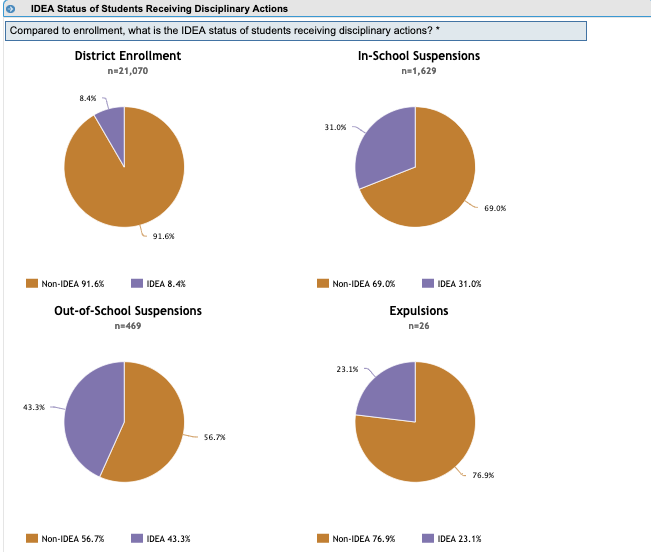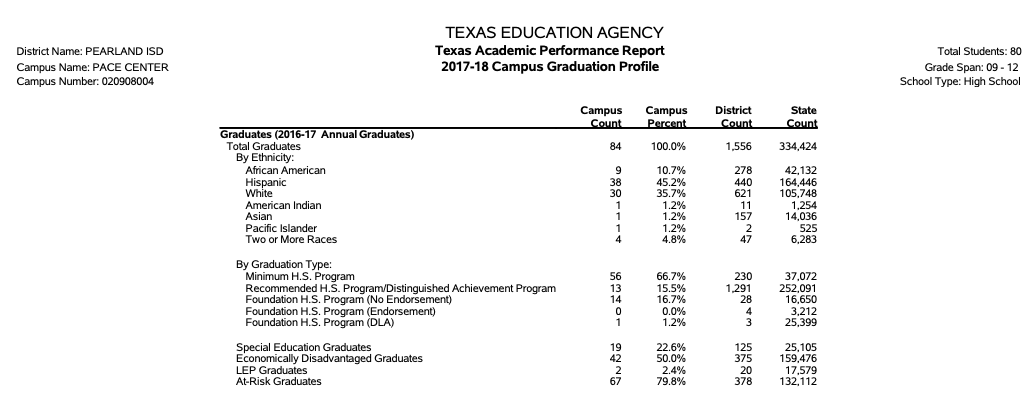Category Archives for Issues
Media Literacy and Democracy
The overwhelmingly educated, thoughtful, compassionate people of Pearland have been reaching out to us about fake news and the importance of media literacy. Here are some tips* on how to discern when a site is not to be trusted.
1. Credibility – Do they provide insight into leadership and mission? Is the reporting consistent with said mission? Is there a professional email for contact? What is the background authors / editors claim, and can it be validated?
2. Quality – Is the site replete with spelling and grammatical errors? Does this inattention to detail give you confidence about the integrity of the reporting?
3. Sources and citations – Do they cite primary sources and accurately reference those sources? In a world where 60% of people will share provocative headlines without reading any further**, fake news thrives. Challenge yourself to interrogate the primary source.
Exercise: Do we have any fake news sites in our community? What is your evidence?
Those who defy journalistic ethics by intentionally distorting information and invoking stereotypes are a threat to a healthy democracy.
*https://www.summer.harvard.edu/inside-summer/4-tips-spotting-fake-news-story
**https://www.washingtonpost.com/news/the-intersect/wp/2016/06/16/six-in-10-of-you-will-share-this-link-without-reading-it-according-to-a-new-and-depressing-study/?utm_term=.c30320b4015d
#activecitizenship #medialiteracy
CAUSE, CORRELATION, AND THE WEIGHT OF THE EVIDENCE: MENTAL HEALTH
There is no question that voters are deeply concerned about the missteps on mental health and suicide in this district – a function of the failure to be informed by long-standing and well-described epidemiological trends in youth depression and anxiety. Unlike the reactive present leadership, we propose to create proactively a more inclusive, compassionate, and restorative climate with accountability and to screen and implement high risk interventions through schools. Teen suicide is a national crisis, but it is much more acute in Pearland ISD, with a rate 1.5x national average.
While as a physician scientist, I know that assigning cause is tricky and correlations can be abundant and spurious, here we also have the weight of the evidence.
1. IRRESPONSIBLE RESOURCE ALLOCATION: The school board decided in 2015 to disinvest in behavioral health coordinators. We have seen at least 7 suicides since that time in PISD (1.5x national average). SOLUTION: District campaign with accountability to create a culture of inclusion and a commitment to whole child health as a fiscal, social, and moral priority.
2. DEAFNESS TO COMMUNITY STAKEHOLDERS: Despite broad concern and a strong community coalition led by Chinese families demanding resolution of a toxic GPA system in 2017-2018, the only concession made for current students was a completely tangential longer lunch hour. SOLUTION: Move towards a GPA system that preferentially weights a limited number of AP classes. Be in continuous conversation with students about the best model with feedback after implementation.
3. PSEUDOSCIENCE TO DRIVE AN AGENDA: Exaltation about the value of struggle is gratuitous and unscientific. The kinds of stress that are healthy for development occur in a context of supportive relationships. But this is not part of the district ‘grit’ campaign, a pseudoscientific repackaging of the ‘bootstrap’ narrative. ‘Grit’ does, however, absolve the district of responsibility. Furthermore, if leadership is going to fetishize Asian culture (we are appalled), it must own the fact that stress related to education accounts for most youth suicide in South Korea, which has the highest rate of suicide among children ages 10-19 in the world. SOLUTION: Engage with professionally and culturally diverse community councils on data-driven policy.
3. MISHANDLING OF BULLYING: Bullying is known to be highly correlated with suicidal behaviors. We admire our Rise Mentorship program, which understands the critical importance of a community of caring. This should be central to district culture and practice in general. Families tell us repeatedly how bullying is mismanaged in PISD. SOLUTION: Implement defined guidelines to reduce risks for our children *including* a system of accountability for school personnel and administration. Explore restorative practices in our schools.
4. BLINDNESS TO VULNERABILITY: Students with learning disabilities or differences and LGBT youth are known to have much higher risk of suicidal behaviors. PISD has no targeted programs to ensure we address these vulnerabilities. SOLUTION: Bring students, parents, teachers, and behavioral health experts together through the School Health Advisory Council to make this a 2019-2020 priority.
Explorers
After spending summers in Ecuador and Paraguay as a high school and college student, I recognized the tremendous developmental benefits of not just learning but living other cultures, concepts, and contexts. I realized early the lack of humility in most charity (reactive) or philanthropy (strategic) and with inspired guidance from a youth leadership development program moved to examine local resources and empower sustainable, community-driven change.
In medical school, I saw how health disparities mirrored disparities in educational and economic opportunity, and I realized how my privileged participation in a program that took me twice to South America was not available to most students. My first thought was to start a scholarship that would support students who were economically disadvantaged to participate in the experience that was so formative for me. But ultimately, I felt this was a bandaid for an unjust circumstance, and I was looking for a cure.
As the Greater Houston area, including suburbs like Pearland, have changed demographically, the cure has become so obvious to me. It is not to uplift programs that further privilege the privileged (see email in image below) but to take advantage of the rich opportunity to build community across the various perceived divides right where we live - a deeply worthy endeavor that is accessible to all.
Pearland ISD could take meaningful action on cross-cultural exchange within the boundaries of our district - where we could not only share our cuisine, traditional dress, languages, and customs but also the challenges we face as recent immigrants in an indisputably anti-immigrant moment. As we resist celebrating difference only insofar as we are tickled by the novelty, as we get real about deep interest for whole human beings and not just their curious cultural practices, we will invariably discover, with profound compassion, that we are much more the same than we are different.

Students most vulnerable to disciplinary action in PISD
While the data is nowhere to be found or linked on the Pearland ISD website, according to the U.S. Department of Education Office for Civil Rights (from a PISD survey in 2015), black students and (Individuals with Disabilities Act) IDEA students in our district disproportionately receive in-school suspension, out-of-school suspension, and expulsion. While only 16% of district enrollment, black students comprise over 30% of students for whom the district takes these disciplinary actions. The numbers are even more concerning for IDEA students, who represent 8% of district enrollment and 31%, 43%, and 23% of students who are punished. Section 504* student data are not reported by demographic categories.
We have an alternative high school in Pearland ISD called the PACE Center for students with behavioral problems. There, black students are actually underrepresented at 10% of the campus population (relative to 15% of the district), while Latinx students (45% vs. 35%) and special education students (22% vs. 8%) are overrepresented.
We have budgeted for over $2M on security and monitoring services in 2018-2019. With the investment in school safety across the district, are we also taking measures to ensure that *every* student is safe? Perhaps we should be considering a wealth (proven or at least promising) alternative strategies for effective school discipline.
*Section 504 is a civil rights law, while IDEA is an educational benefit law. All IDEA students are covered by Section 504, but the reciprocal is not true. Curiously, PISD reports a smaller number of Section 504 students than IDEA students.


Leading with love
What drives many to a life of service through medicine is a deep compassion for all people. As a physician, I see a whole human being in each patient - with their genetic predispositions, their traumas, their aptitudes, their temperaments, their behavioral risk factors, their social and economic circumstances. As fiduciaries for the health and wellbeing of our patients, if it was not already intuitive, we were trained to see it this way - holistically. It does not surprise me, then, that the Centers for Disease Control and Prevention - with the input of key leaders from the fields of health, public health, education, and school health - have devised a comprehensive Whole School, Whole Community, and Whole Child Model that includes civic engagement (community involvement), family engagement, social and emotional climate, and counseling, psychological and social services.
Yesterday, I discovered at the quarterly Student Health Advisory Council (SHAC) meeting that in Pearland ISD, we focus almost exclusively on physical health and nutrition, ultimately an impoverished view of health. There is opportunity here to address so many unmet needs of our students.
The current Board of Trustees, who has oversight of the SHAC, has had years to implement a more compassionate, comprehensive, and inclusive vision that concentrates not only on academic goals but a district culture that helps us to operationalize our commitment to the education of all of our children. Have they? As parents in the district, you have agency to help create the culture you want to see for the health of your children and our community. Join me in this journey!

A plan for responsible spending in PISD
Here was the growth projection for Pearland ISD in 2015/2016 and 2017/2018. These numbers were generated by consultants who provide enrollment estimates that allow for school districts across Texas to plan how they spend the precious dollars they collect from local, state, and federal sources.

Why, with major economic development projects, expressway and major thoroughfare construction, linear growth in Texas enrollment trends, steady new home activity, did the projection for total growth for Pearland ISD drop precipitously in 2017/2018 relative to 2016/2017 with the expectation that it would maintain that drop for the next decade?
While fiscally conservative forecasts avoid irresponsible spending, they also may result in under-resourcing critical services and the lack of disciplined decision-making in the event of a relative windfall. To mitigate risk but optimally meet district needs, we can regularly compare results to forecasts, update our forecasts in near real-time, and always have in hand a rank list of how we spend what we receive.
ESPAÑOL:
Un plan para los gastos responsables en PISD.
A continuación se muestra la proyección de crecimiento de PISD entre 2015/2016 y 2017/2018. Estos números fueron generados por consultores quien proporcionan estimaciones de la matrícula que permiten que los distritos escolares de Texas planifiquen cómo gastan los dólares anteriores que recaudan de fuentes locales, estatales y federales.

Teniendo en cuenta los proyectos de desarrollo económico, la construcción principal, el crecimiento de la matrícula en las escuelas de Texas y la constante actividad de compra de nuevos hogares, porque se redujo la proyección de crecimiento total para Pearland ISD entre 2017/2018 en relación con 2016/2017, con la expectativa de que mantendrá esa caída en la próxima década?
Las provisiones fiscalmente conservadores evitan los gastos irresponsables, pero también pueden resultar en servicios críticos con poco recursos y la falta de toma de decisiones disciplinada en el case de una ganancia relativa. Para mitigar el riesgo per satisfacer las necesidades del distrito, podemos comparar regularmente los resultados con las previsiones, actualizar sus previsiones case en tiempo real, y tener siempre una list de clasificación de cómo gastamos lo que recibimos.
